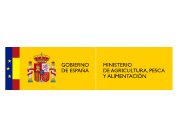
Campo de Montiel more natural and resilient
MITECO
Line of action:
Drivers of biodiversity lossStatus:
FinalizadoExecution date:
2023End date:
2025Total budget:
150.493,70 €Amount of aid from the Biodiversity Foundation:
112.870,48 €Climate change mitigation and adaptation, reversing biodiversity loss and food security are three of the main challenges facing humanity that the project will address on a territorial scale, in the agricultural and forestry mosaic of Campo de Montiel.
To this end, it will produce replicable models aimed at increasing resilience and the capacity to mitigate and adapt to climate change through conservation and restoration actions in forest systems and agroecosystems.
The objectives and actions of this project will directly contribute to Spain’s National Plan for Adaptation to Climate Change (PNACC) 2021-2030 and the EU Biodiversity Strategies for 2030, the Farm to Fork Strategy and the Forest Strategy for 2030, as well as the new European Law on Nature Restoration.
The main objective of this project is to increase the resilience and capacity to mitigate and adapt to climate change in Campo de Montiel through conservation and restoration actions of forest systems and agroecosystems.
To achieve this, it pursues the following specific goals:
- Diagnose the ecological status of Campo de Montiel.
- Establish a replicable model of Mediterranean forest management aimed at increasing resilience, adaptation and biodiversity levels.
- To evaluate the potential of Common Agricultural Policy (CAP) reforestations to store carbon and favor the natural regeneration of the Mediterranean forest.
- Design a network of hedgerows and forest islands in agricultural habitat to increase ecological connectivity, biodiversity and resilience.
- Characterization of land use in the territory and its changes.
- Identification of relevant biodiversity areas.
- Evaluation of the ecological connectivity of the landscape.
- Evaluation of the structure and composition of forest stands.
- Evaluation of the outcome of silvicultural practices on vegetation establishment and growth.
- Evaluation of faunal enrichment of forest stands.
- Evaluation of the structure and composition of reforestations.
- Evaluation of the effects of silvicultural practices on the growth of planted trees and recruitment of woody plants.
- Modeling success factors of planted hedgerow establishment.
- Evaluation of spontaneous recruitment in planted hedgerows.
- Prioritization of areas to locate the network of hedgerows and forest islands.
- Dissemination and communication of the project.
- An intervention has been carried out in the region of Campo de Montiel (Ciudad Real and Albacete), aimed at improving territorial resilience to climate change through ecological restoration actions, sustainable forest management and promotion of biodiversity in Mediterranean agricultural and forest landscapes.
- Through restorative forestry practices, evaluation of the ecological state of the territory, design of green infrastructure and analysis of ecological connectivity, replicable models have been generated that
integrate environmental conservation and agricultural production.


Campo de Montiel more natural and resilient









 back to search
back to search 